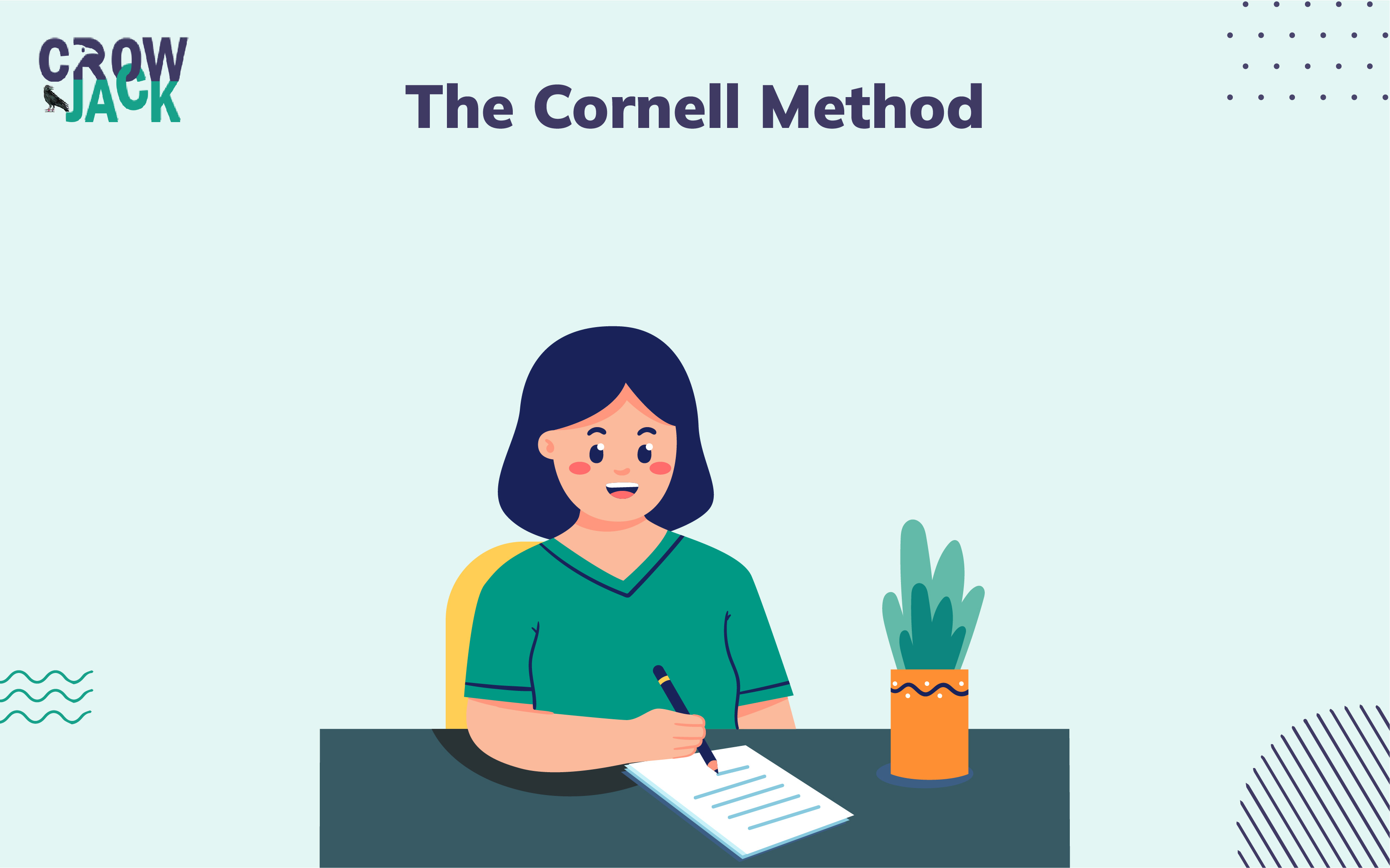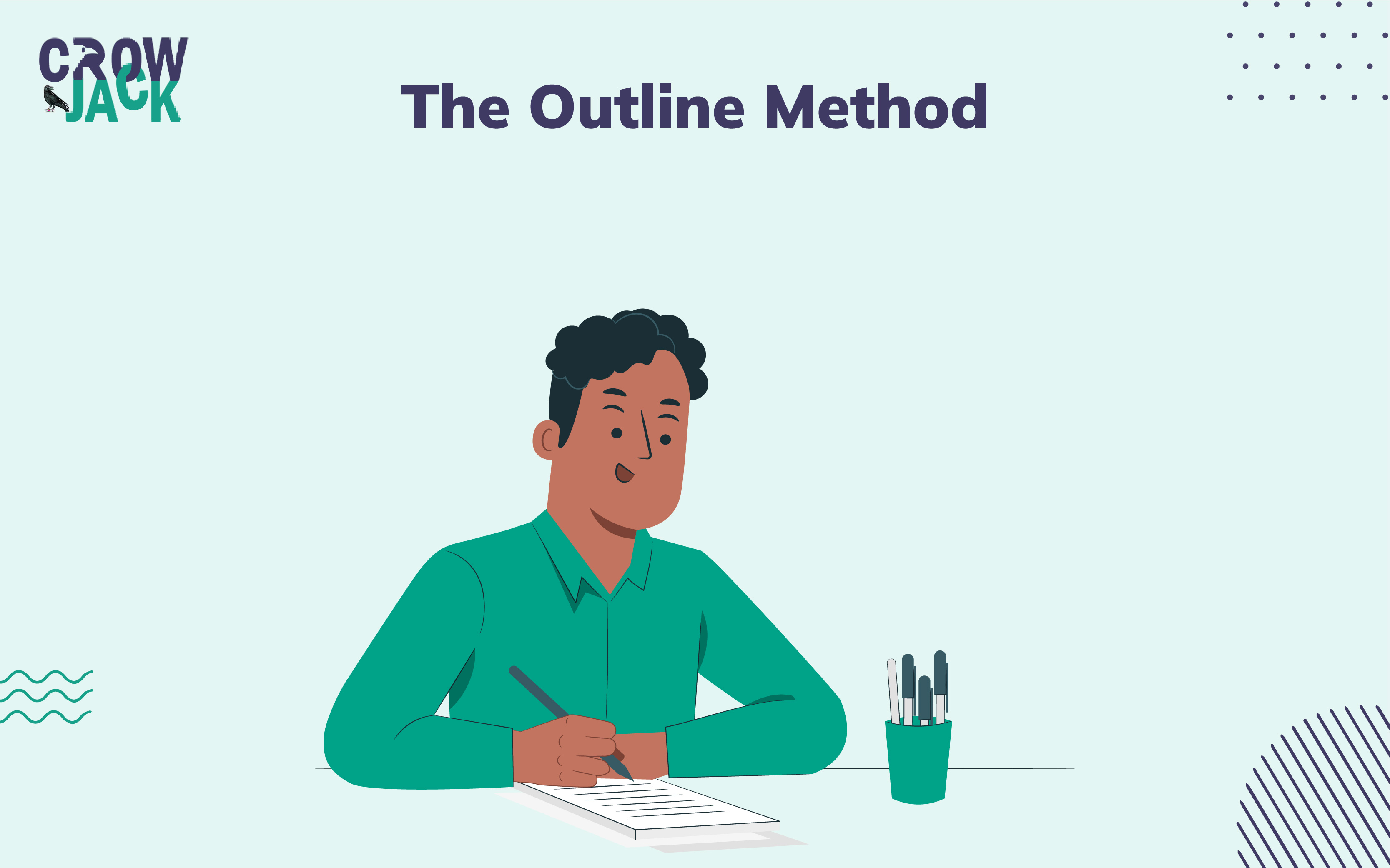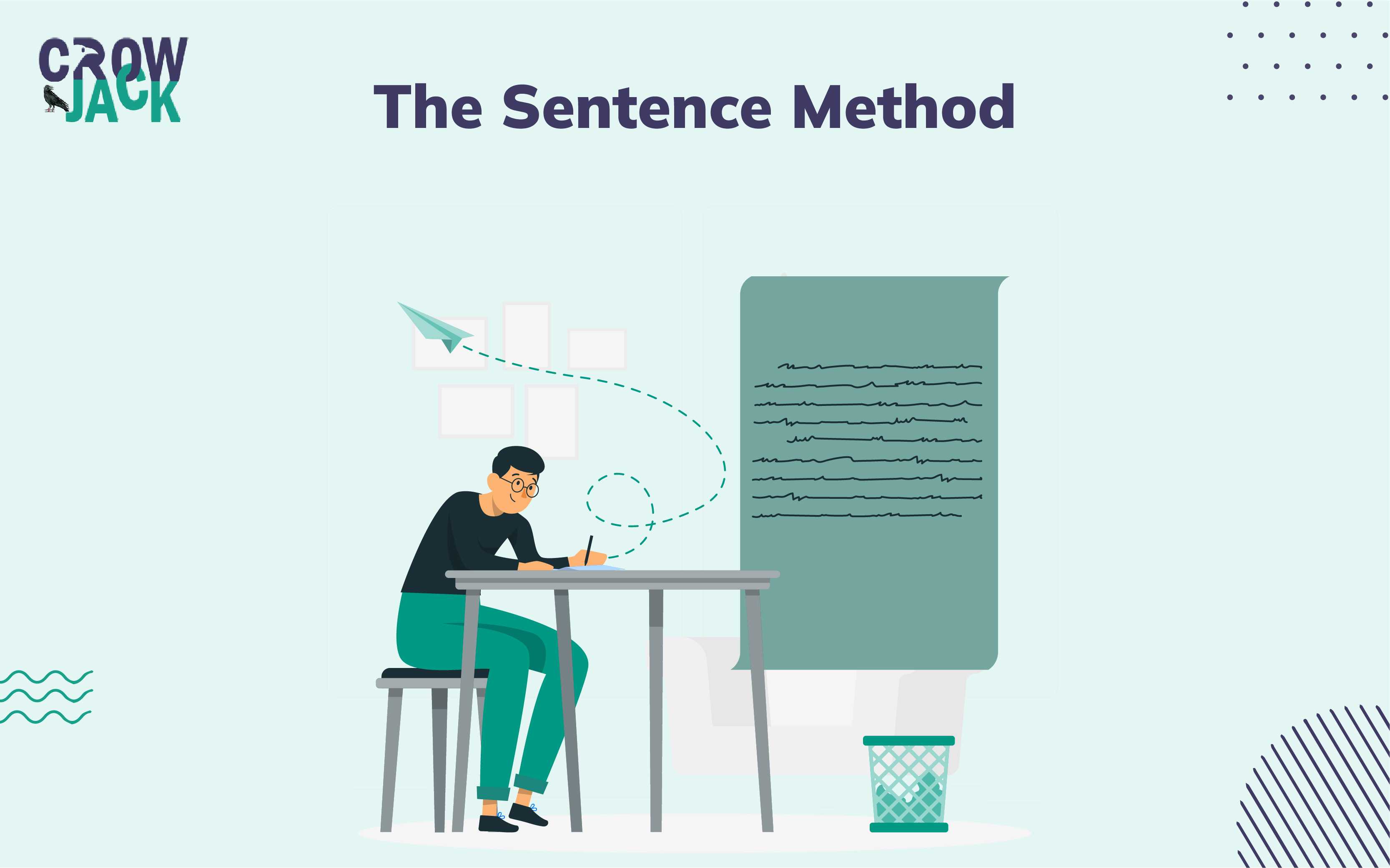Overview
As a high-school student, you are excited about your university days and studies. But within a few days, you understood the difference between the teaching style of the university and high school as universities focus more on open-ended lectures and high schools offer well-built study material to their students. Moreover, now a continuous thought of your exams and academic performance is frightening you. Don't worry, we have all been there.
No matter how tough it looks to adapt to new learning styles and understand academic topics, you can mitigate all these issues with one addition and that’s effective note-taking. Taking good notes can significantly enhance your learning experience and help you retain information more efficiently. In fact, a study published in Psychological Science by Mueller and Oppenheimer states that students who engage in active note-taking during lectures or while studying perform better on exams perform better on exams.
Table of Contents
But note-taking isn't just about scribbling down random thoughts. It's an art that requires organization, focus, and a strategic approach. However, note-taking comes with its own challenges as well. Some of the challenges students might face are an incomplete understanding of concepts, disorganized and incoherent notes, poor information retention, and lack of focus. That being the case through this note-taking guide, we will help you understand what's note-taking, its challenges, and the top techniques that students can use for better learning and overall academic success.
Ready to dive into some practical tips and tricks? Let's get started!
What is note-taking?
Effective note-taking is a fundamental skill of writing down or recording the key points of information that can significantly enhance students' learning experience and academic performance. Yet, many students struggle with capturing and organizing information in a way that optimizes comprehension, information retention, and later review.
Note-taking is a fundamental skill that can greatly enhance students' learning experience and academic success. However, many students overlook the importance of strategic note-taking and fail to invest in this effective technique, which leads to various challenges. Let's discuss those challenges in the coming section.
Problems faced by students not investing in effective note-taking
1. Lack of active engagement
When you don't have a strategic note-taking approach, it becomes challenging for you to stay focused during lectures or sessions. This lack of active engagement leads to missed opportunities, reduced comprehensiveness, and an ineffective learning experience.
2. Poor information recalling
You may face difficulties in retaining and recalling information if you don't have a proper note-taking approach. Relying solely on memorization can result in forgetting key information, which can hinder your ability to review effectively and perform well in exams or assignments.
3. Disorganized notes
If you neglect note-taking, you might end up with disorganized and incoherent notes. This disorganization makes it challenging for you to review and revise effectively, wasting valuable study time and causing frustration.
4. Incomplete understanding of academic concepts
By randomly writing down information without a structured note-taking approach, you risk failing to capture important concepts, examples, and explanations. This can lead to an incomplete understanding of academic concepts, making it difficult for you to apply the knowledge in practical situations or engage in higher-level learning.
Statistics signify that note-taking plays a crucial role in student success. According to a study conducted by the Association for Psychological Science, note-taking by hand fosters better understanding, as compared to typing. This finding highlights the importance of developing effective longhand note-taking skills.
How can longhand note-taking help you overcome these challenges?
However, for those who are unaware of long-hand note-taking, it's a manual note-taking method that uses both verbal and spatial strategies with a generative approach. Within this process, students gain the ability to note down ideas specified in a lecture in one's own words complemented with illustrations.
An experiment with 200 students signified that longhand note-takers outperformed photo-takers in a recall test. Even though both groups had equal opportunities to review their learning materials before being tested.
In the academic world filled with information and endless tasks, note-taking can help students boost their productivity, remember information for a long-time, and stay organized. From capturing vital details during lectures to consolidating your study materials, effective note-taking can make all the difference. Let's dive into the top 5 note-taking methods, to fulfill your academic goals.
Top 5 methods of note-taking
1. The Cornell Method

The Cornell Method revolutionizes your note-taking process, and improves the effectiveness of your study. It helps you organize, summarize, and review information seamlessly for optimal learning outcomes.
2. The Mind Mapping Method

Transform your note-taking approach with the mind mapping method that helps you boost memory, ignite creativity, and organize effortlessly.
3. The Charting Method

Discover the ultimate learning tool: dynamic charting. Elevate notes into visual masterpieces, forge links between concepts, and enhance memory retention like never before.
4. The Outline Method

Experience a productivity revolution with the transformative Outline Method. Discover how this powerful approach can streamline tasks and elevate your organizational skills to new heights.
5. The Sentence Method

Explore the art of communication through the transformative sentence method. Enhance your expression with structured and impactful sentences that captivate and convey with precision.
Benefits of Effective Note-taking
Increased Focus and Engagement
When you take notes by hand, it requires active listening and engagement with the material. The physical act of writing helps to keep you focused and attentive during lectures or study sessions, reducing the chances of drifting off or becoming distracted.
Improved Retention and Recall
Writing by hand enhances memory and helps with information retention. The process of summarizing and condensing information while taking notes promotes better understanding and encoding of the material into your long-term memory. When it's time to review, handwritten notes can serve as effective memory cues, making recalling the information you need easier.
Enhanced Organization and Coherence
Longhand note-taking allows you to structure your notes in a way that makes sense to you. You can create headings, subheadings, bullet points, and diagrams to organize information hierarchically and visually. This organization helps you identify key concepts, see connections between ideas, and create a coherent overview of the subject matter.
Encourages Critical Thinking
Writing notes by hand forces you to process and synthesize information actively. Instead of mindlessly transcribing everything, you need to listen, analyze, and summarize the key points. This is how note-taking promotes critical thinking as you evaluate and interpret the material, leading to a deeper understanding and the ability to ask insightful questions.
Comprehensive Understanding of Concepts
Longhand note-taking allows you to capture important concepts, examples, and explanations in a way that makes sense to you. You can use your own words, draw diagrams, or create visual representations to reinforce your understanding. This comprehensive approach helps you internalize the material and apply it effectively in different contexts.
Facilitates Collaboration and Learning
Sharing handwritten notes with peers encourages collaboration and learning opportunities. You can compare and discuss notes, fill in any gaps, and gain different perspectives on the material. Collaborative note-taking promotes active engagement, reinforces learning, and exposes you to alternative viewpoints and ideas.
Efficient Study Practices
Well-organized handwritten notes are easier to review and study efficiently. You can quickly locate specific information, identify key points, and review important details without wasting time deciphering or reorganizing disorganized notes. This efficiency allows you to make the most of your study time and be more productive.
This was all about the benefits of note-taking. However, Note-taking once limited to pen and paper, has undergone a remarkable digital transformation in recent years. The advent of laptops, tablets, and stylus devices has revolutionized the way we capture and organize information. Let’s delve into the various aspects of this digital evolution, exploring the benefits and capabilities of typing on laptops, writing on tablets, and utilizing stylus devices for note-taking.
Digital Evolution of Note-taking
1. Typing on Laptops
Laptops have become indispensable tools for note-taking, offering a convenient and efficient platform for capturing information. Key advantages of typing on laptops include
a. Speed and Efficiency: The ability to type quickly allows users to record information in real time, keeping pace with lectures, meetings, or brainstorming sessions.
b. Text Formatting and Editing: Laptops provide powerful word processing capabilities, enabling users to format and edit their notes easily. Features like bullet points, headings, and formatting options enhance organization and readability.
c. Searchability: Typed notes can be easily searched for specific keywords, making it effortless to locate and retrieve information from a vast collection of notes.
d. Integration and Collaboration: Laptops allow seamless integration with cloud-based note-taking applications, facilitating collaboration and synchronization across devices.
2. Writing on Tablets
Tablets, equipped with touchscreens and stylus support, offer a more tactile and versatile note-taking experience. The benefits of writing on tablets include
a. Natural Writing Experience: With advancements in stylus technology, tablets provide a realistic writing experience, mimicking the feel of pen and paper. The precision and pressure sensitivity of stylus devices enables accurate handwriting.
b. Handwritten Annotations: Tablets allow users to annotate and highlight digital documents or images with the help of image annotation tools, providing a more interactive and expressive note-taking experience.
c. Sketching and Diagramming: Tablets are particularly suitable for visual learners or those who prefer to express ideas through sketches, diagrams, or mind maps. The ability to draw directly on the screen encourages creativity and enhances the understanding of complex concepts.
d. Portability and Convenience: Tablets are lightweight, portable devices that can be easily carried to lectures, meetings, or on the go. Their long battery life ensures uninterrupted note-taking sessions.
3. Stylus Devices and Specialized Note-Taking Apps
Stylus devices, such as digital pens or smart styluses, offer enhanced functionality for digital note-taking. A research states that stylus use mimics longhand processes, as it leads to more complex motor movements. Hence, it creates similar benefits to longhand note-taking. Stylus devices combined with specialized note-taking apps, provide a comprehensive set of features, including
a. Handwriting Recognition: Stylus devices, when paired with appropriate apps such as Evernote and Google Keep, can convert handwritten notes into digital text using advanced handwriting recognition technology. This enables searchability and enhances the ability to edit & modify notes.
b. Annotation and Markup: Stylus devices allow precise annotation, highlighting, and markup of digital content, making it easier to mark important sections, add comments, or underline key points.
c. Shape Recognition and Drawing Tools: Some note-taking apps offer shape recognition and drawing tools, allowing users to create geometric shapes, charts, and diagrams effortlessly.
d. Cloud Synchronization and Backup: Stylus-enabled note-taking apps often support cloud synchronization, ensuring that notes are backed up and accessible across devices, thereby reducing the risk of data loss.
Digital and longhand note-taking practices have their respective advantages. However, by combining digital and longhand note-taking techniques, students can leverage the advantages of each method to enhance their overall academic performance. This hybrid approach encourages active engagement, facilitates personalization and visualization, provides flexibility and accessibility, fosters collaboration, and aids in effective review and exam preparation. Ultimately, it empowers students to create comprehensive, structured, and personalized study resources that support their learning and academic success.
Digital + Longhand Note-taking
Combining digital and longhand note-taking techniques can be a powerful approach to enhancing students' overall academic performance. Here's how this combination can benefit students:
1. Comprehensive and Structured Notes
By using a combination of digital and longhand note-taking, students can create comprehensive and well-structured notes. They can take advantage of digital tools for typing or recording important information quickly during lectures or while conducting research. Later, they can supplement these notes with additional details, examples, or diagrams using longhand note-taking. This hybrid approach ensures that students capture all the necessary information while also allowing them to personalize and expand upon their notes.
2. Active Engagement and Processing
The combination of digital and longhand note-taking encourages active engagement and cognitive processing. Digital note-taking facilitates quick typing and organization, enabling students to keep up with the pace of lectures. A research by the University of Nebraska states that longhand note-taking requires students to actively process information, summarize concepts in their own words, and draw connections. This active engagement enhances understanding and retention of the material.
3. Personalization and Visualization
Longhand note-taking offers the advantage of personalization and visualization. Students can use drawings, symbols, and diagrams to represent complex concepts or relationships. These visual cues help in memory retention and facilitate easier recall when reviewing the notes. By integrating these visual elements with digital notes, students can create a more engaging and memorable study resource.
4. Flexibility and Accessibility
Digital note-taking provides the flexibility and accessibility necessary for modern students. Notes taken digitally can be easily edited, rearranged, and searched, enabling students to organize and review their material efficiently. Additionally, digital notes can be accessed across devices, allowing students to study and review their notes anywhere, anytime. This flexibility and accessibility complement the benefits of longhand note-taking by providing a digital platform for the organization and easy retrieval.
5. Collaboration and Sharing
Combining digital and longhand note-taking methods facilitates collaboration and sharing among students. Digital platforms and apps enable students to share their notes, collaborate on projects, and exchange ideas. Longhand notes can be scanned or shared digitally, allowing students to work together on the same set of notes, compare perspectives, and fill in any gaps in their understanding.
6. Review and Exam Preparation
When it comes to reviewing and preparing for exams, the combination of digital and longhand notes can be highly beneficial. Digital notes can be quickly searched, allowing students to find specific information or keywords efficiently. Longhand notes, on the other hand, promote active recall by requiring students to remember and retrieve information from memory. By utilizing both methods, students can reinforce their understanding of the material through active recall while benefiting from the organizational advantages of digital notes.
Wrap-up
To conclude, we hope our guide helped you in solving major problems linked with note-taking, and that you are ready to boost your learning effectively. While the 5 note-taking methods discussed serve different learning styles, you can easily experiment with those methods and develop your own variations.

 Proof Reading
Proof Reading  Copy Writing
Copy Writing  Resume Writing
Resume Writing  Blogs
Blogs Guides
Guides SOP's
SOP's Student Resources
Student Resources Research Topics
Research Topics Login
Login Register
Register